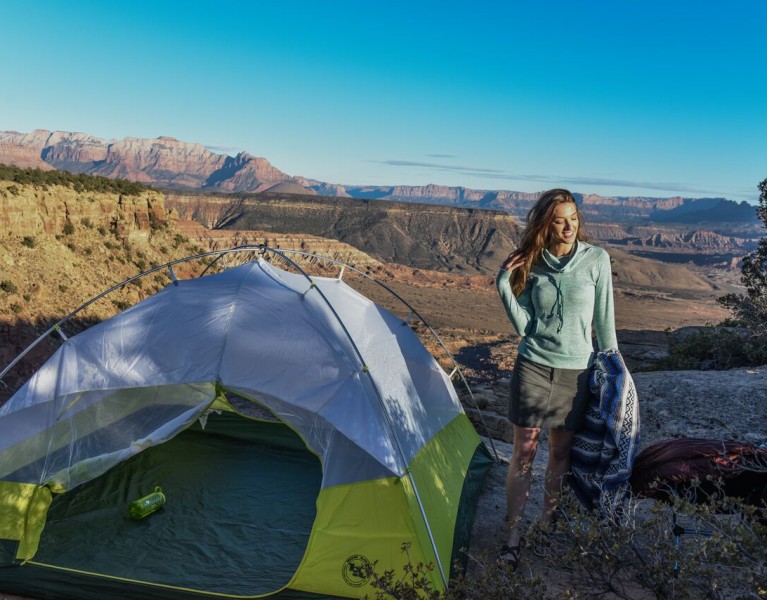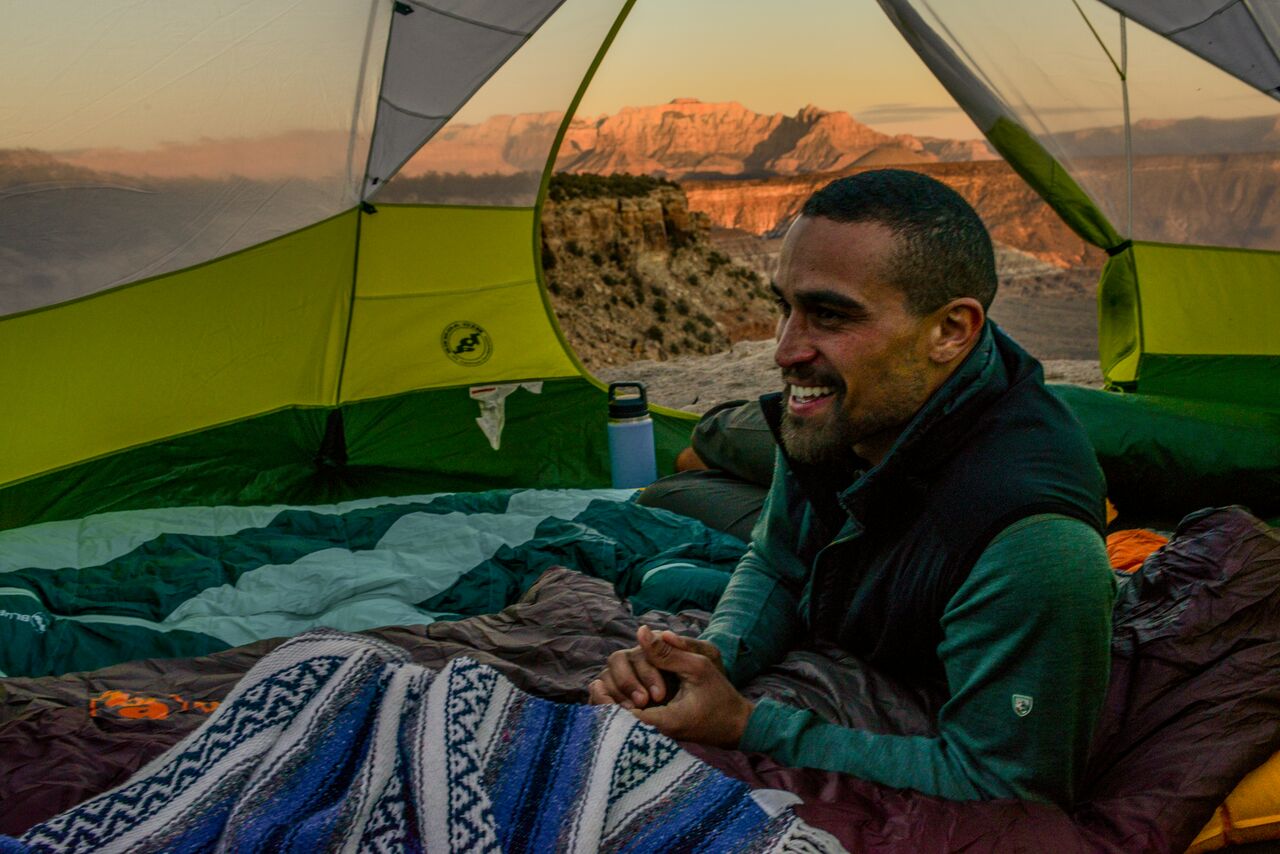
Experience Outdoor Life: Camping and Hiking in Parks and Forests
Table of Contents [Show]
State and National Parks, Recreation Areas and local parks offer camping facilities, hiking trails, fishing and other camping activities for you and your family to enjoy. Camping is not just "roughing it" with a pup tent in the wilderness without running water and sanitary facilities. Camping today includes everything from deluxe motorhomes, trailers, and campers to comfortable dome tents and portable sanitary conveniences.
Many hikers have backpacks with tents or they may hike with pack animals including horses or llamas. People can enjoy overnight hikes or day hikes where they return to a comfortable campsite that has water, showers and other facilities nearby.
Your requirements for camping will depend on you and your family's preferences. You can start with a rented RV or use a tent. You can sleep on the ground in sleeping bags over an air mattress, use a cot or stay in a camper or motorhome with beds.
Campgrounds
Many State Parks and National Parks, along with private campgrounds, have electrical and water hookups for motorhomes, vans, and other recreational vehicles. They also have fire pits, barbecues, picnic tables, and sanitation facilities. You can use the kitchen in an RV complete with a microwave oven or cook outdoors on a propane stove.
Special sites are also available for people with tents. Reservations may be required in popular parks during the summer. Trash barrels and recycling bins are available in most parks.
Campgrounds can be located in areas surrounded by trees near a river or lake or on the seashore. Many public parks try to give each RV or tent site a little privacy with their tables and fire pit. More primitive sites that don't have electricity and water are usually located in forests or grassy areas. Self-contained RV's can generally use a clearing anywhere off a National Forest road. People can also set up tents by trails in most parts of a National Forest or Recreation Area.
Park visitors are advised to check all camping regulations including trail reports and fire danger. Park rangers in public parks will usually answer any questions you have about fire safety and other regulations.
Hiking and Biking
Hiking trails can be easy or difficult. Most campers take day hikes on portions of trails. Loop trails through a forest or near a lake or river bring hikers back to the starting point. Public parks and forests offer information on the distance, conditions, and difficulty of different trails in a park. Signs will indicate if leashed dogs are allowed on trails and many parks have special paper bags for disposing of animal waste.
Beginners are encouraged to enjoy easy, relatively flat trails. Although most trails are well marked, it does not hurt to carry a compass, trail map or hand GPS. Some smartphones have this technology.
Day hikers usually take a daypack with water, tissue, and some food such as energy bars. People who fish carry their rods, reels and other gear. Hats, sunscreen, and insect repellant are mandatory!
Hiking is an opportunity to appreciate the beauty of nature along with walking. Take the time to read the posted information about the flora and small animals you see on the trail. Take photos and leave nothing behind but footprints.
Always check weather conditions before embarking on a hike. Weather can change quickly. You may need to carry rain gear in some areas.
Mount Rainier National Park in Washington State has the 93-mile Wonderland Trail that circles around the base of the mountain. This is the trail for experienced backpack hikers since it has many changes in elevation and weather. The entire trip is usually a two-week camping and hiking experience. Even if you're an experienced hiker who's planning to try this trail, make sure you check out our Washington State camping guide before your trip. Day hikers can enjoy short hikes on any of the 260 miles of maintained trails. Hikers are required to stay on the marked trails and avoid walking through fragile flower and grass fields.
Oregon State Parks have outstanding camping facilities and excellent trails through forests or along the spectacular coastline. Several of the parks have lakes and rivers for fishing and boating.
Mountain trail bikes are popular in parks and recreation areas. Bikers should stay on marked trails and wear the necessary safety gear. Experienced mountain bikers may participate in mountain bike races during the summer. Ski areas often offer their trails to mountain bike riders during the offseason.
Clothing

Women and men who enjoy camping and hiking know that dressing in layers is important. Clothes should be comfortable. Wear women's hiking shorts or
hiking pants for women and shirts and tops that are consistent with the weather. A windbreaker, sweatshirts, or a fleece should also be packed since the weather can become cooler at night, even during the summer.
Hats for women can include everything from baseball caps to sun hats with large brims. Sunglasses are also advised.
Men's wear is comfortable with short sleeve shirts to long-sleeve flannel shirts. Shorts or men's hiking pants like KÜHL Radikl are in order along with jackets or sweatshirts.
Check out the full line of outdoor clothing for men and women from Kühl featuring comfortable high-performance fabrics for all weather conditions. Enjoy camping, hiking, and other outdoor activities that give you an opportunity to experience nature.


